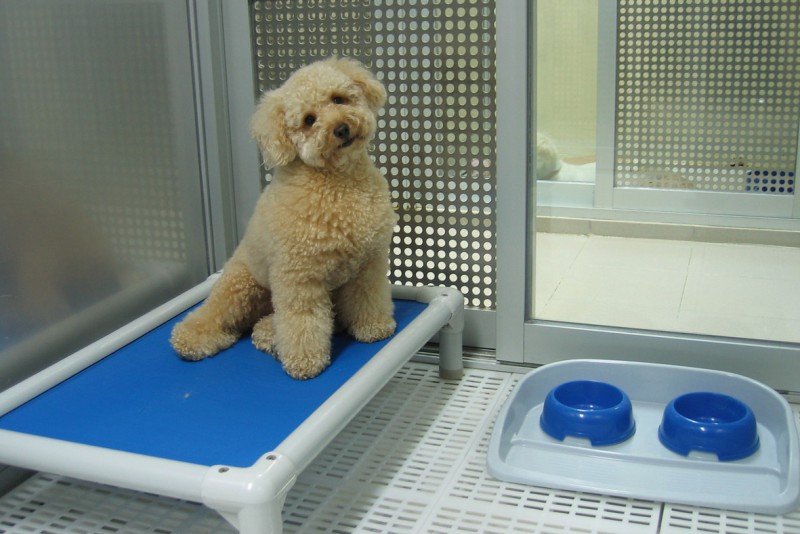Changing Your New Dog’s Diet
Posted by Jenn on 05/01/2017
When you bring home a new dog, you may or may not know what food she has been eating. If your dog came from a breeder, the breeder will probably tell you what brand and flavor of food she was given, but animal shelters are more likely to feed their dogs a mish-mash of whatever is donated. In any case, there are many reasons why you may want to switch your dog’s diet now that she’s yours. Maybe she was eating a regular adult dog food before, but you’d like to try feeding her a diet more tailored to her needs (for example, a formula specifically for small- or large-breed dogs). Maybe you already have a dog at home and you’d prefer to buy only one type of dog food for everybody. Or maybe you just want to upgrade to a higher-quality food with less filler.
 This bed is a good size for this puppy
This bed is a good size for this puppy
Whatever the reason for switching foods, the important thing is to do it gradually. This will reduce the chances of gastrointestinal side effects, which is especially important for puppies’ and newly adopted dogs’ sensitive stomachs. Instead of suddenly feeding your dog an entire portion of the new food, feed her a mixture of both foods for a little while. Experts recommend increasing the proportion of new food to old food over a period of 7-10 days and see how it goes. Actual portions tend to vary considerably, but you could try a 75%/25% split for a few days, then 50%/50%, then 75%/25%.
Note that dog food recalls are an important exception to this rule of thumb. If your dog’s food is recalled, you will have to switch her food abruptly. In this case, try to find a new food with the same protein(s) – chicken, beef, lamb, venison, salmon, etc. – and nutritional make-up as the recalled food. (Obviously, you should make sure that the new food hasn’t been recalled, too! We recommend checking Dog Food Advisor or the FDA’s website before you buy.) You can also try feeding your dog small portions at first, while you see how she responds to the new recipe.
So how can you tell if the transition is going well? By the end of the trial period, your dog should be eating a full portion of the new food with no issues. Keep an eye on your dog’s bathroom activities so you’ll notice any problems. A serious reaction will be hard to miss, and may involve vomiting, diarrhea, and/or inflamed skin and lots of scratching. (Before you give up on the new brand, though, try to rule out any other potential causes of the problem, such as yesterday’s adventure in the compost bin.)
And, of course, your dog is the ultimate judge of dog food. If your dog simply refuses to eat the new food for several meals in a row, she’s obviously not a fan and you should try something else! With some trial and error, we’re sure you’ll find the perfect recipe that your dog will thrive on.
